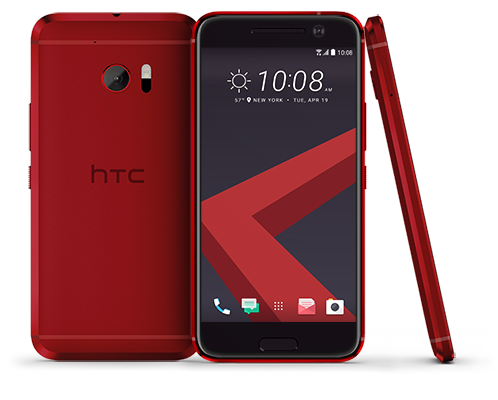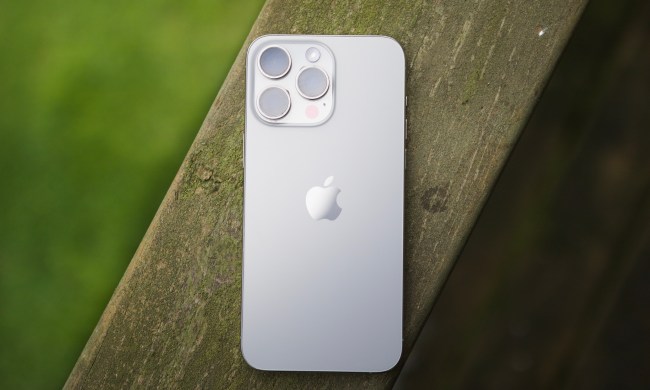HTC’s flagship smartphone has been available for a few months now. The latest top-of-the-line model dropped the well-known “One M” naming structure for a simpler moniker — the HTC 10.
Once king in the Android
Now to rejuvenate sales, two new colors have been announced for the
Release date and price
To bring more interest in choosing the HTC 10, the company announced two new colors coming in October — Camellia Red and Topaz Gold. The colors are exclusive to HTC.com, but you can pre-order them now. You may want to act quickly, though, as the red and gold options are only available in limited quantities.
HTC has two offers for its latest flagship. You can either grab $100 off the device, bringing it down to $600, or you can opt for JBL’s noise-cancelling headphones, the JBL Reflect Aware C. The
Buying from HTC means you get “Uh-Oh Protection” — the manufacturer will replace your device once at no charge for a cracked screen or water damage within the first 12 months of ownership. But remember, the unlocked version is only compatible with T-Mobile and AT&T networks. If you want to stick to your carrier, the 10 is available on Verizon and Sprint:
- T-Mobile pulled the smartphone from its shelves in July.
- Verizon is selling the HTC 10 for $27 a month for 24 months. The phone costs $648 if you buy the 32GB version outright. You can grab the 10 on Verizon’s website now.
- Sprint has an installment plan of $26 a month for 24 months. Or you can buy the device at full price for $624. You can read about it here.
- AT&T said from the start that it will not be selling the HTC 10. “AT&T won’t be selling HTC 10 directly, so we encourage AT&T customers to purchase the open-channel device directly from HTC.com,” the carrier said.
Related Offer: See here for HTC 10 cases and accessories
Processor and specs
On paper, the HTC 10’s internals seems to match other flagship devices like Samsung’s Galaxy S7 Edge and the LG G5. The 10 has a Quad HD resolution of 2,560 × 1,440 pixels and a pixel density of 564 ppi (pixels per inch), and all of that is powered by the Qualcomm Snapdragon 820, an Adreno 530 GPU, and 4GB of RAM. There will be two variants of the HTC 10, but the only difference will be the processor. The U.S. version will have the Snapdragon 820, and the other variant will feature another Snapdragon processor.
You can choose between 32GB or 64GB of internal storage, but the 10 offers MicroSD support to expand up to 2TB of Flex storage. Flex, or adoptable storage, lets you use external storage as your internal one. It’s an
Like the other high-end devices on the market, HTC’s 10 also includes support for Quick Charge 3.0, which supplements a large 3,000mAh battery. Quick Charge 3.0 should reportedly get you to 50 percent in 30 minutes.
HTC decided to follow in the footsteps of Google and LG by adopting the USB Type-C charging port, which allows for higher-power output, bidirectional charging, and a reversible connector.
A familiar look
While the full-metal 10 has a display size of 5.2-inches — 0.2 more than the recent HTC One A9 — it still maintains the same frame size, so you’re getting more screen real estate in the same body. The phone also curves up when it lies flat on a desk, so it’s thinnest point is 3mm, but overall, it’s 9mm thick. That’s 1.8mm thicker than the
But what’s likely the most visible design change is the lack of front-facing speakers and the chamfered edges on the back and front of the HTC 10. The back design, which sports a solid aluminum matte finish, also boasts a thick chamfered border around the frame, offering an extra edge to grip when handling the phone. The same design translates to the front of the phone, though the chamfered edges are much thinner.
The full-glass front gets rid of the metal frame that was a recognizable trait on previous HTC devices, and unlike the One M9, the 10 opts for a dedicated home button like the A9. There are capacitive navigation buttons on both sides of it, which are hidden until you press them.
You’ll find the 3.5mm headphone jack at the top-center of the phone, and the same fingerprint sensor as the One A9 on the front. HTC claims it takes a mere 0.2 seconds to unlock the device.
BoomSound exists, but goodbye front-facing speakers
The Super LCD 5 screen lacks the two front-facing speakers that made HTC’s devices unique — but that doesn’t mean BoomSound is gone. HTC says its “re-engineered” BoomSound Hi-Fi edition speakers separate the woofer and the tweeter, sending the sound output of the former through the bottom speakers, and the latter through the top speakers.
That means you’ll be hearing higher notes coming out of the top, and the mid-to-lower notes coming out of the bottom speaker. The headphone amp offers the ability to upscale 16-bit to 23-bit audio, and each speaker has its own dedicated amp as well.
HTC’s offering a Personal Audio Profile that essentially lets you personalize the sound you hear from the 10 to your own tastes. You can choose between five different frequencies, sort of like a hearing test, to best optimize the sound output.
Camera
HTC touts the 10’s cameras as “world class.” Probably the one feature that makes it immediately distinctive from the competition is that optical-image stabilization is not just on the rear camera, but also on the front-facing one.
The Taiwanese company is also highlighting its improved Ultrapixel 2 camera tech, which essentially increases the size of its individual pixels to allow each one to absorb more light. The larger pixel size can be particularly helpful for low-light scenarios. The 12-megapixel rear camera is equipped with Ultrapixel 2 tech, which increases the pixel size to 1.55μm. The camera also boasts laser autofocus, an f/1.8 aperture, dual LED flash, RAW format support, and 4K video recording with hi-res audio.
You can also shoot videos in slow motion at 720p and 120 frames per second.
The front-facing camera lets you record videos at 1080p. It’s got a 5-megapixel sensor and 1.34μm pixel size. Like the rear camera, it features OIS and a f/1.8 aperture.
DxOMark, a software company that measures the quality of cameras, gave the HTC 10 a score of 88 — putting it side-by-side with the Samsung Galaxy S7 Edge. It’s currently the highest score for mobile devices.
UI, other features, and accessories
HTC has partnered with Google to reduce the amount of preloaded apps and bloatware on the 10 — so now you won’t be stuck with two apps that do the same thing. HTC’s Sense UI is still layered over
The 10’s themes app now has what HTC calls a “Freestyle Layout,” which allows you to drag icons and widgets anywhere, as it’s not dictated by an onscreen grid. You can also completely get rid of icons and replace them with “stickers” from HTC Themes. You can peruse thousands of themes in the app. It essentially allows you to further customize your home screen based on your own style.
HTC is also offering a successor to its popular “Dot View” case — the Ice View. It offers a translucent front-cover that lets you “see when that next call or message comes in” and more without having to open the
In addition, and more pertinent to the customer, the HTC 10 features IP53 certification, confirmed by HTC Senior Global Communications Manager Jeff Gordon on Twitter. The IP53 rating means that the HTC 10 isn’t entirely safe from dust and can’t take anything more than a light stream of water. In other words, the HTC 10 is protected from the elements, but not as much as competing handsets, such as the Samsung Galaxy S7 and its larger, edgier sibling.
This article was originally published in April. Updated on 08-19-2016 by Julian Chokkattu: Added news of a red and gold version of the HTC 10.










